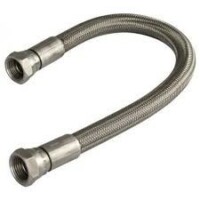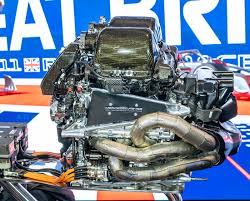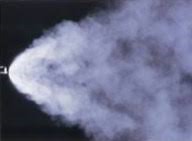Can I pressure test on flammable fluids including gasoline?
How risky is it to test on highly inflammable fluids at low or high pressures?
There are a massive range of flammable fluids and equipment using them. How do you test the high pressure fuel system on this amazing Mercedes F1 engine?
You can pressure test on highly flammable fluids including petrol/gasoline, but really look very carefully indeed why. Do you need to and what else might you use? There is quite a lot to unpick. We need to run through the very basics of vapours and flashpoints.
Why does a fluid turn to vapour?
We all know that water will evaporate over time and that petrol or gasoline will evaporate very quickly, giving rise to heavy fumes.
Pick most of these low viscosity fuels or solvents and they will similarly evaporate quickly and smell. Those are the properties you instinctively expect. Pick a fuel like kerosene and it won’t evaporate or dry up so quickly. It will smell if you spill it or get the fluid onto clothes, but nothing like petrol. Pick water and at room temperature it might take days to evaporate. So, what is happening?
The fluid is in a liquid state that allows it to be poured. Heat will allow the atomic bonds to break and the fluid will turn into a gaseous state or a “vapour.” Pick one of our fuels or solvents and it simply has weaker atomic bonds, allowing the fluid to escape into its gas or vapour stage much more readily. Hence a fuel or solvent might evaporate quite quickly and the vapour or gas state smell.
So, what about the fluid catching fire? Move on to flashpoints.
Why does the flashpoint matter?
Take gasoline/ petrol and it isn’t the fluid stage that is flammable but the vapour or gas stage that is so lethal. This isn’t obvious.
The vapour stage is generated so readily that it is this that is burning and being fed by the fluid being rapidly changed to vapour by the heat. Another example is an automotive fuel tank that still has petrol fumes or vapour inside it despite all the fuel having been poured out. This is massively flammable and can be lethal if somebody tries to weld the tank. These can explode spectacularly.
Let’s define “flashpoint.” The flashpoint of a fuel or solvent is the lowest temperature at which the fluid evaporates to combine with air and form a mixture that can be ignited. The important thing is that this mixture will continue to burn even after the source of ignition has been removed. That’s lethal. At a certain temperature your fuel or solvent starts to evaporate and can then be ignited by flames, sparks or simply a hot surface.
There is an obvious difference between, for example diesel fuel which has only a slight smell at say 15°C and petroleum/gasoline which is massively fumy. Petrol has a flash point of only -43°C, so almost everywhere on earth the fluid will evaporate very quickly. Hence the need to ventilate the air if petrol is evaporating and not risk a build up of vapour in a closed space. If you have a source of ignition like an electrical spark or naked flame and enough gasoline fumes, they will ignite. If you are handling any fluid that has solvents in it, the flash point may be the first piece of information that you need to know.
Every fluid has its own characteristics. Even “fuels” cover a massive spectrum. For 35 years, we have manufactured a portable test unit for the variable guide vane actuator on jet engines. The test pressure is 24 bar on Jet A-1, a jet fuel very similar to Kerosene. Here the test pressure is relatively low, the system pressure we know is very small and specifically, the flash point on the fluid is 38°C/100°F. There is a risk associated with hot surfaces, flames, and sparks but manageable. In contrast, F1 teams need to pressure test fuel manifolds at high pressures, typically a safety factor on top of the 100 bar working pressure. The flash point on the petrol/gasoline is actually -43°C/-45°F. That means that unless it is very cold indeed, an ignition source will ignite the vapour. As a final comparison, 70% Ethanol has a flash point of 16°C/62°F, so for much of the world, the ambient temperature will be high enough for a good proportion of the year for the vapour emitted to ignite.
People worry about vapour. Safety is everything. Why are you testing on the fluid? Do you really need to?
Should I test on flammable fluids and is there an alternative?
Yes, there are alternatives that might or might not work for your system.
You could test on water. That is cheap and safe. It is more viscous than your fuels and solvents so maybe not quite so searching but you can run to much higher pressures, for reasons that we explain in our Pressure Equipment Directive section below. If you have a fuel tank, water will probably be fine. For a fuel system, definitely not as you will never be able to remove water.
You could test on oil. The oil would very probably be dissolved by your final solvent/fuel and eventually diluted right down in the system before use, which we suspect is essential. The much higher viscosity might make the test pointless in some respects but do think it through. There is some logic. You might find the system was perfect on oil but leaked on the very low viscosity solvent or fuel. That is true. A common and valid argument is that if you can test to a much higher pressure on a “safe” Group 2 fluid (see PED explanation on these two groups of fluids later in our article), then that has validity and value. That may be the only way to mechanically provide the big test overloading on a component or system. It is an interesting discussion. We would say that oil can take a lot of flushing to get rid of it. Would our F1 racing team want their fuel injection system stuffed up with oil that then needs to be flushed out. No, we think not. Some applications are definitely no to oil.
You could use high pressure gas, although as a company we just don’t do this. We worry about stored energy and risks if something fails. Do keep in mind that valve manufacturers like Swagelok will routinely test on helium, based on this being an incredibly searching test.
The fourth option from the alternatives is testing on another solvent or fuel that is soluble with your final working fluid but has a higher flash point. Diluting it down to eliminate the test fluid is easier than diluting down oil because you will get rid of it that much quicker during flushing. Note you are still in the realms of testing on “inflammable fluids” which are Group 1 per the PED which is explained further on in the article. It is still worth considering, for example, testing on a higher flash point fluid like kerosene.
Could I simply not bother to test at all?
We would say that isn’t a good idea.
In a perfect world, you would avoid testing on flammable fluids. Could you simply not test at all? If you are manufacturing a device working at pressure, you have simply got to carry out a functional or proof test because it is working at pressure. We think this is a very bad place for Professional Engineers to be, let alone their employer. You then have the very risky scenario where a user will possibly experience a hazardous leak on their working fluid, but you didn’t do the test because it was a hazardous fluid.
What is the risk in pressure testing on flammable fluids?
Flammable fluids and any ignition source are a dreadful risk.
An ignition source could be a flame, sparks or even hot surfaces.
Other than the process of testing, you have all the peripheral risks and safety hazards around flammable fluids.
You are storing and handling flammable fluids then filling a reservoir. Are you set up for this in your workplace? The pressure test kit might itself leak and represent a hazard. There is a risk there. Not a big risk, but nevertheless it is real. Finally, if your pressure test actually indicates a leak, you could have a spray of fluid into your shop or over people. You should be protecting from leaks by using something like our MTE enclosure. Again, your workshop setup needs to be for flammable fluids. Cloths and tissues sodden with flammable fluids are a serious hazard.
Once you have a hazardous area, you are into ATEX and IECEx rated equipment and a whole different world. We sell pumps approved for hazardous areas. Talk to us about your application.
The other big risk is personal safety. Many of these fluids are very difficult in contact with skin and not at all good to breath in. You have all the safety issues on storing these fluids and dispensing them. Be very careful.
Can a high pressure spray of petrol catch fire spontaneously?
This fire misting system needs 100% effective very fine droplets to work.
On flammable fluids this is massively hazardous.
The answer is no. You need vapour plus air then a final ignition source such as a spark, as flame or a very hot surface.
So, a very fine spray or petrol leaking from a seal at high pressure won’t spontaneously catch fire unless those other elements are there. Even so, a high pressure mist spray of very small droplets instinctively sounds very risky. The real issue is that the leak is providing an intense distribution of petrol vapour into a substantial volume within your shop. A spray of minute droplets is bad, but these individually evaporate immediately forming vapour. A carburettor or fuel injection injector is massively effective in creating a concentrated fuel vapour in a small volume of air. We are the opposite. We don’t want this. This is dreadfully dangerous for us. If there is an ignition risk such as a naked flame or spark, this is a very high risk leak.
Like a lot of this subject, there is plenty to learn before wading in. This is a good paper on flash point v autoignition temperature. https://www.compassfuels.co.uk/what-is-the-difference-between-a-flash-point-and-an-autoignition-temperature/
Where does Potentially Explosive Atmospheres come into it?
Once you have flammable vapour in an atmosphere, you have a Potentially Explosive Atmosphere. At that point, you have significant hazard. The safety of your workforce might be the first thing that seems a major risk but think also of the bigger world and the safety of by passers. Explosions in buildings or on sites are a massive safety issue. You are into using equipment ATEX and IECEx certified for use in a potentially explosive atmosphere.
Note that a potentially explosive atmosphere can include dust, as might be found in a flour mill, woodworking shop or metal fabricators.
What equipment can Sarum Hydraulics offer for Potentially Explosive Atmospheres?

ATEX marking for equipment certified for use in potentially explosive atmospheres.
Sarum Hydraulics specialises in non-sparking dispensing and pressure test pumps for hazardous areas. These are ATEX/IECEx certified pumps and are quite specialist. Read more on what we can offer.
What does the Pressure Equipment Directive (PED) say about flammable fluids?
The PED is the EU legal framework that defines the essential safety requirements for pressurised equipment; compliance with the UK Pressure Equipment (Safety) Regulations 2016 implies compliance with the PED. It applies to all systems with a pressure exceeding 0.5 bar. How do you work through the PED?
The PED determines whether and at what level conformity assessment is required for an item of pressure equipment, through consideration of the type of component or system, fluid (liquids and gases) type, system pressure and system volume. This is done through reference to pressure-volume graphs for different equipment types and fluids. Dependant on where the item of pressure equipment ends up on the relevant graph determines whether and at what category conformity assessment is required.
For pressure equipment below the threshold may be self-certified as manufactured under ‘Sound Engineering Practice’ and a conformity assessment procedure is not required. For pressure equipment above the threshold, conformity assessment is required and there are 4 categories of ranging from I (the least stringent) to IV (the most stringent).
Once this assessment has been carried out and the conformity assessment category determined, the PED is used to decide on the route taken for conformity assessment of the item. This ranges from the lowest level where the manufacturer self-certifies, up to the highest level requiring third party type testing of the pressure equipment, approval of quality management processes in manufacture, and surveillance of manufactured product. The PED refers to these numerous procedures as ‘Modules’; each Module defines requirements and each category defines which Modules may be applied.
Important to note also is that pressure equipment categorised under Sound Engineering Practice must not be CE marked whereas pressure equipment conformity assessed under categories I-IV must bear the CE marking.
There is an excellent very basic guide on https://tameson.co.uk/pages/pressure-equipment-directive . There is a lot of material on the web on the PED, but it does become involved quite quickly. This guide seems to us to be very easy to follow.
Of particular interest for us here is that under the PED working fluids are classified into two groups; group 1 comprises dangerous fluids (flammable, toxic and/ or oxidising) and group 2 is other fluids (non-dangerous). When working with group 1 fluids, the threshold for conformity assessment is necessarily reduced when compared to group 2 fluids.
Sarum Hydraulics Micropac hand pumps are categorised under Sound Engineering Practice; as such the maximum working pressure allowable when operating the pump with a group 1 liquid is 500 bar.
So, can I test at 700 bar with a flammable class 1 fluid?
No, you can’t test to 700 bar on group 1 flammable fluids using a Sarum Hydraulics Micropac hand pump. According to the PED and referring to Article 4 ‘Technical Requirements’, paragraph 1 (ii), you may use our hand pump in conjunction with a group 1 liquid up to 500 bar provided system volume does not exceed 1 litre. If system volume exceeds 1 litre, then the maximum pressure allowable is reduced according to the graph shown in Annex II, Table 3. If you want to test outside these parameters, you will need to ensure that equipment has been PED conformity assessed to meet your requirements. That is into specialist territory.
What equipment would Sarum Hydraulics supply for testing on flammable fluids?
You would look carefully at what you are trying to achieve and we would offer the right equipment fitted with the correct seals for your fluid. This would invariably be catalogue equipment from our web site. For pressure testing, the MW and MP are always a good starting point.
Is it easy to provide pressure test kit with the correct seals for flammable liquids?
Flammable fluids always need care on picking the right seal compound. Our own Micropac pumps were designed on day one so that you could very easily substitute seals in Viton fluorocarbon (FKM), EPDM or even Kalrez FFKM. Definitely run with the right seals. A perished seal could provide the very fine high pressure spray that we dread. Plus, you are risking a leak within the test equipment itself. That is the scenario that a pressure tester doesn’t want!
A second consideration is the very low viscosity of these fluids. Our Micropac pumps were designed 40 years ago for water and even thinner fluids. A pump that uses ball valves on metal seats won’t work properly. Poppet and soft seat valves are a must.
Our long standing concern still carries on. If it is 100% clear from a name or data sheet what a fluid is, that’s fine on asking a seal supplier or chemist what seals will work. If the fluid is a proprietary name, quoted as highly flammable but neither the Safety data sheet nor the web actually tell you what is in it or what seals you require, there is a big problem. You might have to work hard to find out. Definitely don’t guess.
What hose should I use with flammable fluids?

PTFE hose with a stainless overbraid is a good starting point for excellent chemical resistance. Be careful of the maximum working pressure on this type of hose. Image by courtesy of HEL performance.
Hoses can be quite a challenge. A synthetic rubber hose will probably perish. Check the compatibility. We are fans of PTFE hoses with stainless overbraid. Keep in mind that these will only run up to around 200 bar in their most common specification, subject to checking out the manufacturer. Kevlar reinforced PTFE will run quite a lot higher (up to around 550 bar). We are fans of Tite-Flex on these higher pressure PTFE overbraid hoses. Will a thermoplastic hose fit the bill? On the face of it, a polyamide tube liner offers great chemical compatibility, but the outer sleeving is often in an alternative materials that doesn’t offer great compatibility. Again, talk to your hose supplier.
Just be massively careful of high pressure hoses on this large family of flammable fluids.
If you have an application for hydraulic testing or dispensing using one of our Micropac pumps, speak to us. After over 40 years, we are the experts.







Leave A Comment